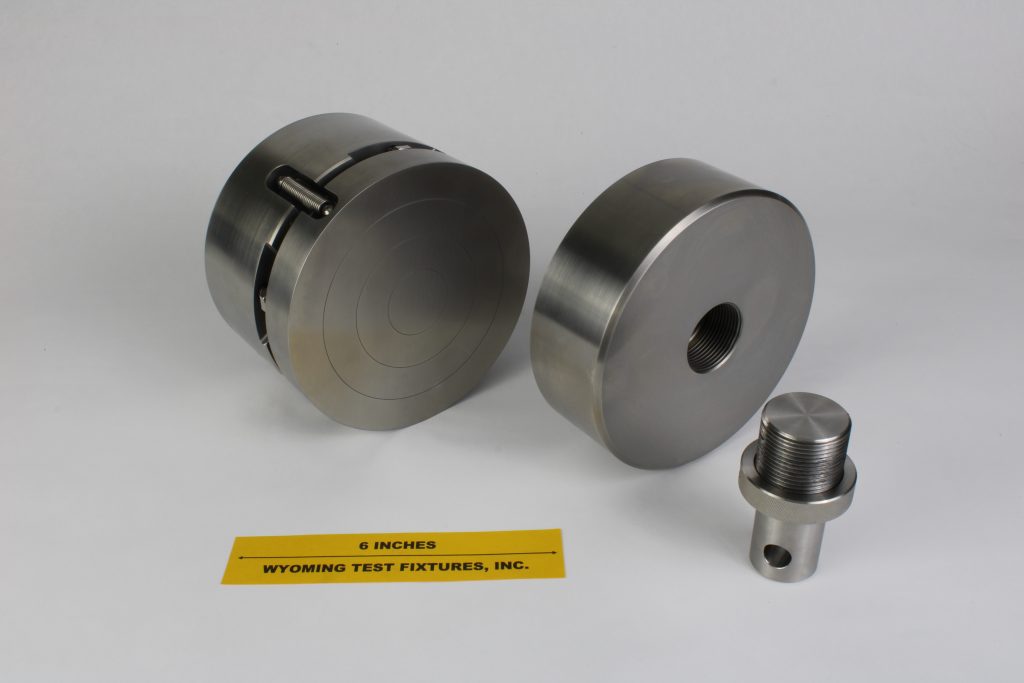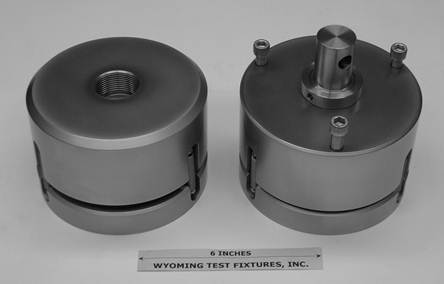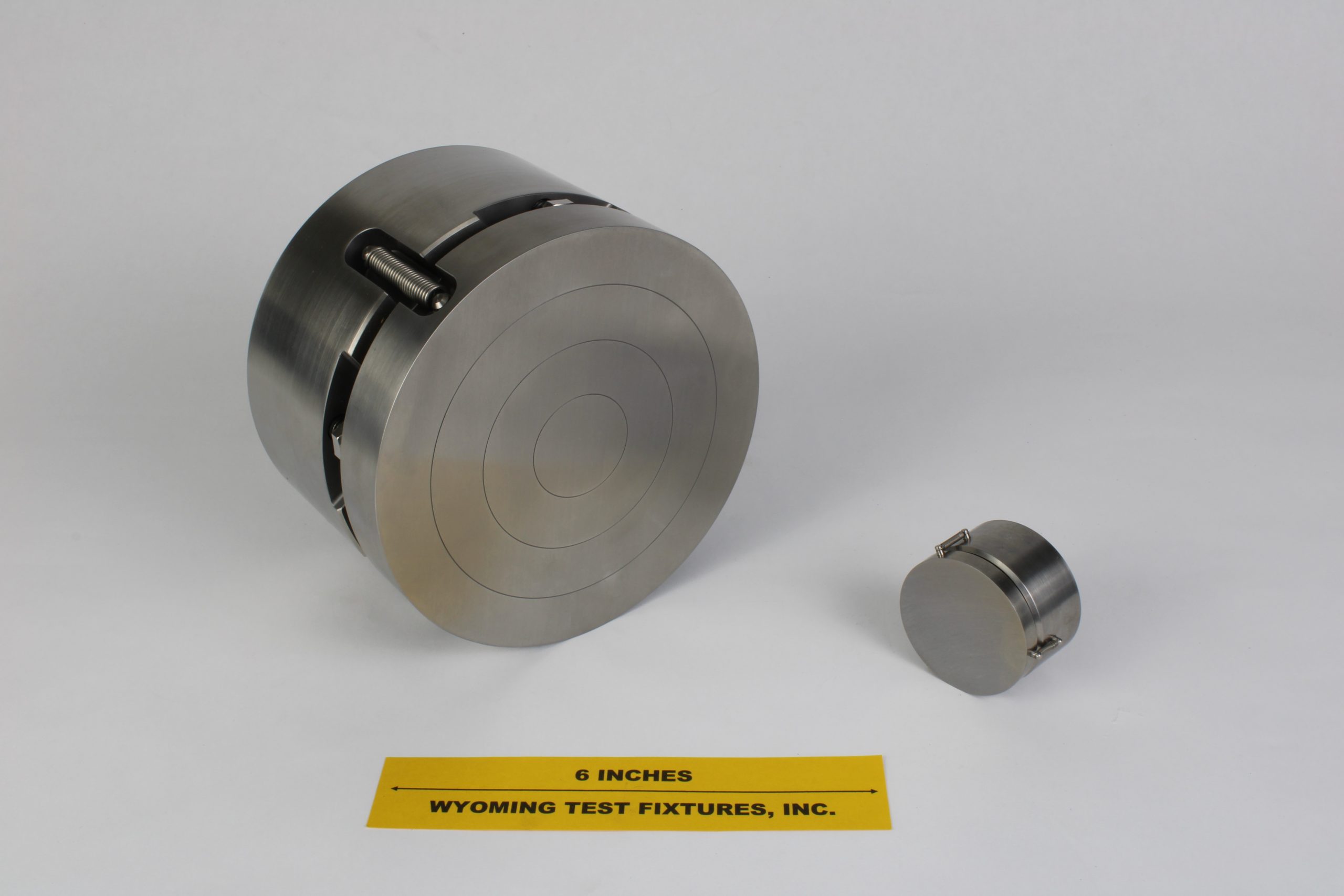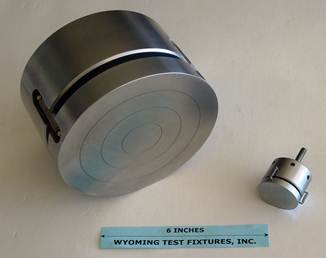Compression Platens - Fixed and Spherical Seat
Various Types, Configurations, Sizes and Load Capacities are Available

Fig. 1: Spherical-Seat Platen (left), fixed platen with female threaded hole and optional adapter (right).
(All platens shown here are 6 in. diameter)
Platens of all types, in all sizes and load capacities, can be provided, including custom designs for special applications. The 6 in. diameter platens shown in Fig. 1 are the most popular size. Typically, platens are fabricated of fully through-heat-treated440C stainless steel to provide high surface hardness and durability in combination with corrosion resistance. However, for less demanding loading applications, such as for testing soft, low strength materials, platens of low carbon steel or other materials can be supplied as a lower cost alternative.
Very shallow concentric rings are typically scribed on the loading surface to permit visual centering of the object to be placed on them for loading.
Any type of adapter, threaded or otherwise, can be provided, at reasonable cost, to permit mating of these platens with the user's specific testing machine.
A fixed platen is commonly used in combination with a spherical seat platen, the former at the bottom to provide a stable base to place the object to be tested on, and the latter at the top to help compensate for any load misalignment in the testing machine or the particular test fixture being used. The movable portion of the spherical seat platen is held in the neutral position by springs, and thus can also be used as the bottom platen, if desired.
A lock-down option is also available with the spherical seat platen, as shown in Fig. 2. Three screws are provided that can be tightened against the movable portion of the platen to prevent it from pivoting relative to the fixed portion. That is, the spherical seat platen can be converted to a fixed platen. This can be useful, for example, to compensate for machine and platen installation misalignments, the spherical seat platen being aligned parallel to a fixed platen by bringing the two platens together and then locking the spherical seat platen in position. Likewise, if a specimen or fixture to be loaded by the platens does not have parallel faces, the platens can be brought into contact with the specimen or fixture and then the spherical seat platen locked in position.
Figs. 3 and 4 show some smaller size spherical seat platens. Both fixed and spherical seat platens as small as 1 in. diameter have been fabricated.

Fig. 2: Spherical Seat Platens – 6 in. diameter standard configuration (left) and lock-down option (right).

Fig. 3: 6 in. and 2.5 in. diameter Spherical Seat Platens.

Fig. 4: 6 in. and 40 mm diameter Spherical Seat Platens.

